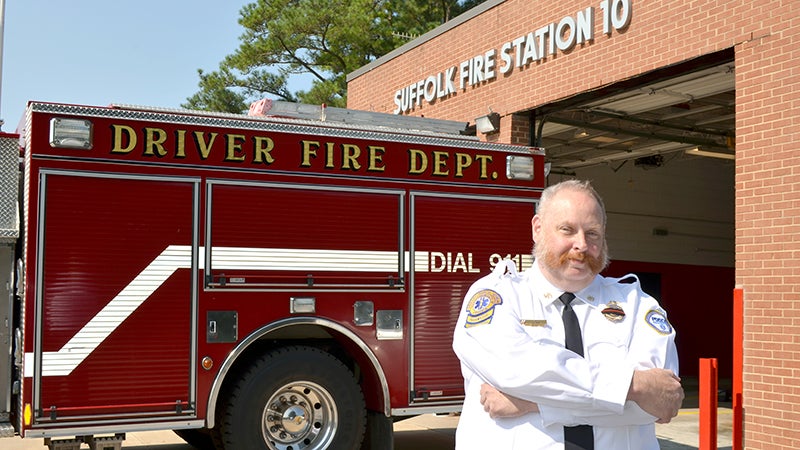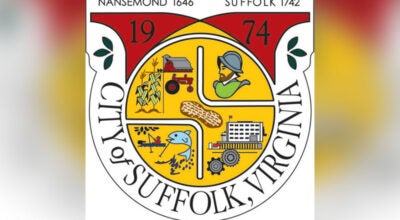Driver VFD brings on new deputy chief
Published 11:38 pm Tuesday, August 14, 2018

- Charles McLeod assumed his new role as the deputy chief of administration for the Driver Volunteer Fire Department on Aug. 6.
The fire and emergency medical service family at Driver Volunteer Fire Department recently welcomed a 28-year veteran as its new deputy chief of administration.
Charles McLeod was announced as the new deputy chief by Fire Chief James Gray, and according to a press release, McLeod began his duties on Aug. 6.
“We are thrilled and pleased that Charles will be joining our leadership team for the organization,” Gray stated in the press release. “He brings tremendous experience and extensive management skills, and is widely recognized as a progressive leader in both the fire and EMS service.”
The 51-year-old veteran said his career passion started when he was just a child, even though his father had something else in mind for him.
McLeod explained that his father, a police officer, got him a set of Tonka police vehicles for Christmas when he was 5 or 6 years old. His dad was not pleased when he found him in the garage later with a can of red spray paint for each car, truck and other blue vehicle.
“For a cop, you know how that’s going to make him feel,” he said with a laugh. “I’m his firstborn son. This is what was expected of me. He pretty much knew he lost me at that point.”
His career in fire and EMS officially started in 1988 in Ocean Shores, Wash., and has since taken him to various levels of service in Oregon, Utah, Nevada, California and Virginia, as well as providing aid in Canada and the United Kingdom.
He said he gravitated towards fire and EMS for the satisfaction of being able to save lives and help people on the scene. It was instant gratification that felt like an adrenaline rush for him and his team.
“I was able to see immediately that if someone needed help, I was able to help them,” he said.
McLeod is a nationally registered paramedic with a Bachelor of Science in EMS administration and is currently studying for a master’s degree in emergency services management, according to the press release. He’s previously held positions like clinical preceptor and disaster consultant for various institutions and companies.
He’s also an adjunct assistant professor and clinical coordinator for the EMS program at Paul D. Camp Community College.
“Charles is certainly well prepared for the job, and he has hit the ground running,” Gray said.
He first came to Virginia in 2010 as operations manager for PC Paramedic in Williamsburg, a disaster recovery IT company. He landed at Norfolk International Airport the day before a massive snowfall that would “jumpstart” how he helped people in the commonwealth, he said.
“With power out and people not able to get to work, you would probably look at it much like you would a hurricane,” he said about conditions around his Williamsburg office. “We had the novel idea of being able to string together computers, networks, servers that would allow people to collaborate from their homes on a very small bandwidth, and give them the opportunity to still be productive.”
He got back into EMS in 2011 with the Virginia Beach Volunteer Rescue Squad, the largest all-volunteer based EMS system in the country. He said the experience was a reminder of the need to give the best possible care fast and in situations that vary wildly.
It was also his lesson in how that same critical attention needs to be shared within his department.
“We sometimes don’t even know what we’re responding to, and we give the best possible care that we can for those individuals, yet we miss that element with each other,” he said. “We really, really have to work on being there for each other, and I think that in such a large system, it’s very difficult to form that culture.”
He’s excited to build upon the brotherhood that already exists between the 37 members of the Driver Volunteer Fire Department.
“If somebody’s got a broken-down truck, we can give them a ride. If somebody’s moving, that’s not a problem. We’ve got ways to take care of that,” he said. “Lawns need to get cut? I know a guy, let me make a telephone call.”
“It’s the ability to give back to the community, but then we’re also able to take care of each other so that we can give back to the community.”
He wants to build up his team just like he does with his students at Paul D. Camp Community College. That includes encouraging more volunteers to do their part.
“We’ll look for new volunteers as well,” he said. “People who want to get involved but never had any idea how they would be able to do that.”
This is also dependent on the department’s relationship with its citizens, he said, starting with educational efforts like the Stop the Bleed campaign, CPR and first aid classes and opioid crisis awareness.
He wants members of the community to let their department know what they need to feel safe.
“We may be the Driver Volunteer Fire Department, but it’s our citizenry that holds the map that we navigate by,” he said. “They tell us what services they need, what services they want, and it’s our responsibility to provide those for them.”




